 Once properly inserted by your doctor, intrauterine devices, called “IUDs” for short, are 99% effective. Their effectiveness is one reason they are one of the most popular forms of contraception. Some types of IUDs will prevent you from getting pregnant immediately, while others become effective within a few days. One question that comes up is, When can I have sex after an IUD?
Once properly inserted by your doctor, intrauterine devices, called “IUDs” for short, are 99% effective. Their effectiveness is one reason they are one of the most popular forms of contraception. Some types of IUDs will prevent you from getting pregnant immediately, while others become effective within a few days. One question that comes up is, When can I have sex after an IUD?
Types of IUDs
IUDs are t-shaped devices about the size of a quarter, made of polyethylene plastic. Once your doctor inserts any type of IUD in your uterus, you should refrain from having sex for 24 hours. Additionally for IUD recovery time, you should not take a bath or insert any other object into your vagina (such as a tampon or douche product) during that 24-hour period.
The reason for waiting for 24 hours is due to the risk of infection. The IUD insertion process requires the doctor to pass instruments through your vagina, cervix and into your uterus. It disturbs the protective mucous lining of those organs. If an infection is able to get into your uterus, it can be very serious. Abstaining from sex helps protect you from developing a serious pelvic inflammatory disease. Also, you may experience uncomfortable side effects that occur for a day or two after your IUD is inserted.
After that initial 24-hour IUD recovery time period, you can have sex, but your IUD may not be immediately effective. Whether your IUD is effective immediately or not depends on which type you have and the timing of having it inserted. There are several types of IUDs on the market, as described below:
Copper IUDs
Copper IUDs (brand name is ParaGard) is one popular form of IUD. The ParaGard IUD provides birth control immediately upon being properly inserted by your doctor. ParaGard may also provide contraception for any unprotected sex you had during the five days prior to being inserted.
ParaGard is a T-shaped plastic frame with a copper wire coiled around it. Once inserted into the woman’s uterus, it works by producing an inflammatory reaction that is toxic to sperm and eggs (ova), thus preventing pregnancy. ParaGard uses no hormones and can provide birth control for up to ten years.
Hormonal IUDs
 The hormonal IUD products (brand names are Mirena, Kyleena, Liletta, or Skyla) contain the hormone levonogestrel, a progestin, in various amounts. For hormonal IUDs like Mirena, Skyla, Kyleena, and Liletta, the device is effective immediately if you have it inserted within seven days of the start of your period. If you have it inserted any other time, it will not be effective for one week. During that period of time, you should abstain from sex or use another form of contraception such as a condom.
The hormonal IUD products (brand names are Mirena, Kyleena, Liletta, or Skyla) contain the hormone levonogestrel, a progestin, in various amounts. For hormonal IUDs like Mirena, Skyla, Kyleena, and Liletta, the device is effective immediately if you have it inserted within seven days of the start of your period. If you have it inserted any other time, it will not be effective for one week. During that period of time, you should abstain from sex or use another form of contraception such as a condom.
Hormonal IUDs work by slowly releasing hormones. These IUDs can prevent pregnancy in several ways: 1) it thickens the mucus of the cervix so that it blocks and traps the sperm, 2) it stops you from ovulating, meaning your ovaries do not release eggs, thus depriving the sperm of the ability to fertilize an egg, and 3) some types of hormonal IUDs thin the uterine lining so that if sperm is able to reach an egg and fertilize it, the fertilized egg cannot implant in the uterus.
Which Type of IUD Should I Get?
To decide on which IUD you need, you need to be examined by your doctor. Your doctor will conduct a pelvic examination and determine the health and position of your pelvic organs. After that examination, your doctor will consult with you about the type of device that is best for you.
 In recommending which device is best for you, your doctor will consider the results of your pelvic examination, the heaviness and regularity of your menstrual cycles, your overall health, age, the size and position of your uterus, whether you have had children, and other important factors pertaining to your medical history and plans for future pregnancy.
In recommending which device is best for you, your doctor will consider the results of your pelvic examination, the heaviness and regularity of your menstrual cycles, your overall health, age, the size and position of your uterus, whether you have had children, and other important factors pertaining to your medical history and plans for future pregnancy.
Once you decide on the kind of IUD you need, your doctor will insert it into your uterus and explain the proper hygiene for the device you use. To properly place the IUD, your doctor will have to pass it through your vagina and cervix and position it in your uterus using special instruments. The insertion of the IUD may cause you some discomfort or pain that usually subsides in a day or two. You can manage it by taking an over-the-counter pain reliever such as ibuprofen or naproxen.
Consult Raleigh Gynecology And Wellness For More Information On Sex After IUD’s
To ensure you get an IUD that is effective and safe for your body, you need to get the advice of experienced professionals. At Raleigh Gynecology and Wellness, you will find people who are experts on IUDs and other forms of contraception. Contact them today for more information and to schedule an appointment.


 The hormonal IUD products (brand names are Mirena, Kyleena, Liletta, or Skyla) contain the hormone progestin in various amounts. By slowly releasing the hormones, a hormonal IUD can prevent pregnancy in several ways: 1) it thickens the mucus of the cervix so that it blocks and traps the sperm, 2) it can stop you from ovulating, meaning your ovaries do not release eggs, thus depriving the sperm of the ability to fertilize an egg, and 3) some will thin the uterine lining so that if sperm is able to reach an egg and fertilize it, the fertilized egg cannot implant in the uterus.
The hormonal IUD products (brand names are Mirena, Kyleena, Liletta, or Skyla) contain the hormone progestin in various amounts. By slowly releasing the hormones, a hormonal IUD can prevent pregnancy in several ways: 1) it thickens the mucus of the cervix so that it blocks and traps the sperm, 2) it can stop you from ovulating, meaning your ovaries do not release eggs, thus depriving the sperm of the ability to fertilize an egg, and 3) some will thin the uterine lining so that if sperm is able to reach an egg and fertilize it, the fertilized egg cannot implant in the uterus. The copper IUD (ParaGard) uses no hormones and can provide birth control for up to ten years.
The copper IUD (ParaGard) uses no hormones and can provide birth control for up to ten years.
 Many myths about IUDs persist. Misgivings about their safety and efficacy are likely based on confusion about how they work and things they have heard about the old-fashioned IUDs. Three of the more common myths about IUDs include:
Many myths about IUDs persist. Misgivings about their safety and efficacy are likely based on confusion about how they work and things they have heard about the old-fashioned IUDs. Three of the more common myths about IUDs include: Not true, provided the IUD has been properly placed by your doctor.
Not true, provided the IUD has been properly placed by your doctor.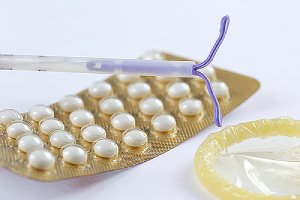 If you are looking for a reliable form of birth control, consider an IUD. For many women, an IUD is the preferred method of contraception because it provides safe and effective
If you are looking for a reliable form of birth control, consider an IUD. For many women, an IUD is the preferred method of contraception because it provides safe and effective 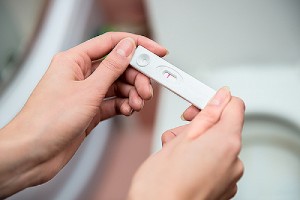 The hormonal IUDs currently available in the United States are Mirena, Kyleena, Liletta, and Skyla. The differences between them are based on:
The hormonal IUDs currently available in the United States are Mirena, Kyleena, Liletta, and Skyla. The differences between them are based on: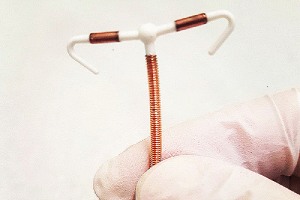 IUDs are the first choice of birth control for many women. The chief reasons for their popularity are:
IUDs are the first choice of birth control for many women. The chief reasons for their popularity are: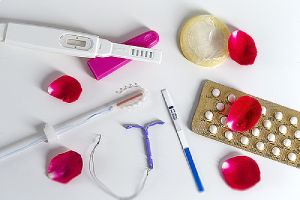 An IUD (“intrauterine device”) is a very popular method of contraception that provides long-term, effective, safe, and inexpensive protection against pregnancy.
An IUD (“intrauterine device”) is a very popular method of contraception that provides long-term, effective, safe, and inexpensive protection against pregnancy.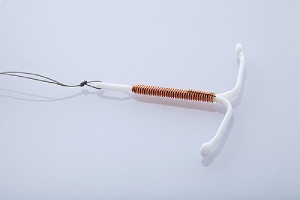 One type of IUD known as the ParaGard IUD is wrapped in copper. Once inserted, the copper IUD provides immediate birth control. If you have a copper IUD inserted within five days of unprotected sex, it may prevent you from becoming pregnant. Also, a copper IUD will provide effective birth control for up to ten years.
One type of IUD known as the ParaGard IUD is wrapped in copper. Once inserted, the copper IUD provides immediate birth control. If you have a copper IUD inserted within five days of unprotected sex, it may prevent you from becoming pregnant. Also, a copper IUD will provide effective birth control for up to ten years.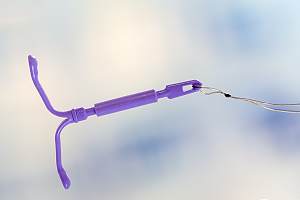 The Kyleena and Mirena IUDs use the same hormones as the Skyla IUD and work the same way. However, Kyleena and Mirena IUDs deliver a higher dosage of hormones to your uterus, and each prevents pregnancy for up to five years.
The Kyleena and Mirena IUDs use the same hormones as the Skyla IUD and work the same way. However, Kyleena and Mirena IUDs deliver a higher dosage of hormones to your uterus, and each prevents pregnancy for up to five years. The biggest difference between the two types of IUD is one releases hormones over time, and the other does not. They differ in other important ways as well:
The biggest difference between the two types of IUD is one releases hormones over time, and the other does not. They differ in other important ways as well: